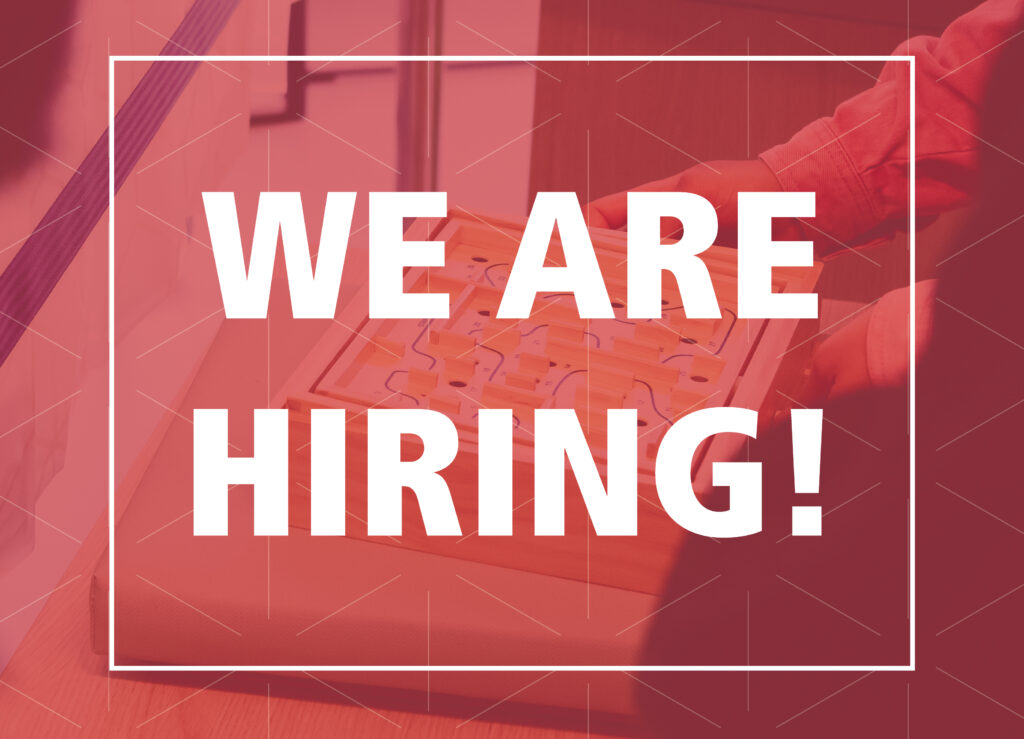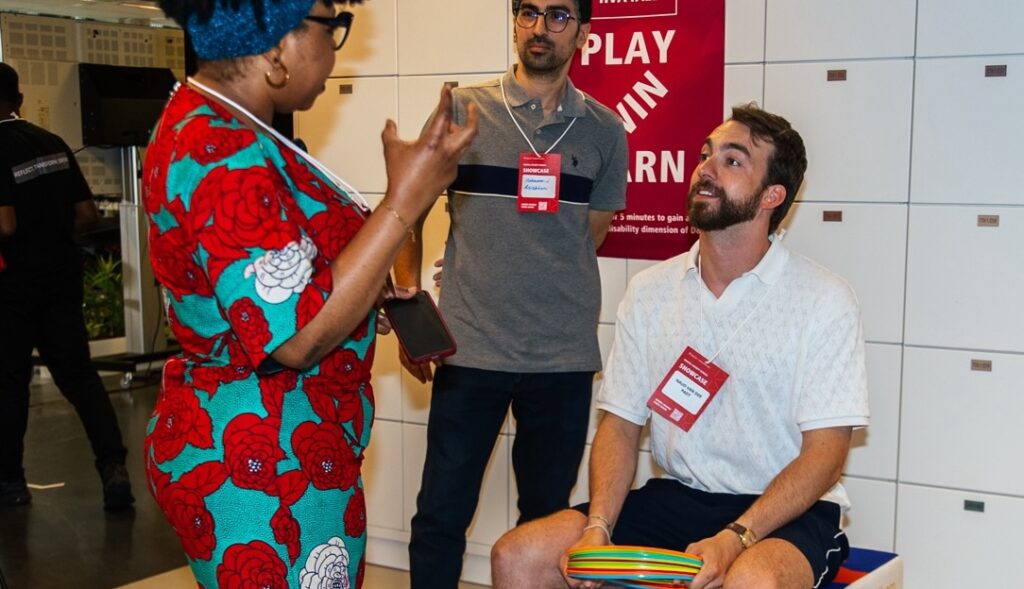Article
The Digital Society School mission to fight ‘design waste’ – A designer’s perspective
We live in a world with plenty of people, plenty of passion, plenty of knowledge, plenty of skills, and definitely plenty of ideas, ready to change the world. Fueled by curiosity and creativity, we seem to want to orchestrate a constant flow towards the new, the disruptive and the innovative.
However, what we don’t seem to grow is a culture of sharing and building upon each other’s work. Creating something new and therefore changing the status quo may disrupt some of the current issues, but does not have the desired longer term effects. The effects we so desperately need in order to reach the Sustainable Development Goals as adopted by the UN by 2030.
I argue here that there is not a real culture of sharing in the design field, that we suffer from ‘design waste’ and we at Digital Society School have been on a mission to fight it for the past years (first at MediaLAB Amsterdam), for example via our Global Goals Jam and Design Across Cultures initiatives.
In this article I will argue why we should not only create change, but aim for transformation. Psychologists state that change initially modifies behavior but that transformation will modify values and desires. Because in real transformation lies the change we are looking for in the world. In culture, behavior and in how we as creators/ innovators will be able to really contribute to a better world by 2030. Transform the world. By design.
AN OPEN CALL TO DESIGN 2030 NOW
This is an open call to join a growing community, a movement, of designers, change-makers and cities that want to open up design and start building upon each other’s work more, in order to achieve the Sustainable Development Goals by 2030…. together.
Digital Society School is a fantastic initiative to actively link design, tech and social innovation to the Global Goals, here you will soon find examples of what design can actually do to create real impact.
The things we create, the things we design, the things we put on this earth, Design plays a pivotal role in the way the world around us is shaped. Design will also play a vital role in tackling the complex issues of these times. Designers should become activists, inspirators for change.
Tim Brown of design agency IDEO recently stated:
“Our job as designers is to inspire the world to tackle the problems that, on the surface, seem intractable. If we’re only thinking about the short term, only thinking about shipping the next product, and not asking questions about the future, we’re not inspiring the world and that’s an important role.”
THE REAL DESIGN WASTE: NOT DESIGNING IN THE OPEN
Our creativity. It is the one resource that will never dry out, but it is the one resource that we waste every day. Over. And over. Again.
Despite the conferences, the blogs, the meetups, the hackathons, the jams, we started noticing that there is no real culture of sharing in the design field.
We do not openly re-use insights nor ideas. We want to do our own thing, we want to make that method our own, we want to look autonomous and authentic. I am not alone in this critique. Many have already opted for change in the design field. ‘Designers, you have to get over the embarrassment to get things done!’, said Pixar President Ed Catmull. Or, ’The design field designs in secret’, says Ryan Singer, of Basecamp.
As a result, valuable insights from design processes are lost or at least never found. I started calling this loss ‘Design Waste’ and initiated a mission to fight it. Now, I am calling out to the creative community to join the fight and start building on each other’s work more.
Designers are not comfortable or confident enough to open up completely. When we get more confident a new phase opens up. We believe more in our process and we know that things are never perfect. So we start showing work earlier and start talking about our rationale behind it at a given step. We might even be unafraid to open our tools and do some real work in real time in front of people, in each other’s spaces.
This is designing in the open.
The effect of truly open design is that we can inspire, involve and really empower not only the design community, but the global community.
Is there anything we can do to speed up the transition from designing in secret to designing in the open, and as a result speed up in solving complex global issues?
Yes! And we believe this fight against ‘design waste’ is threefold:
1. The design field needs to develop a real culture of sharing and truly open up.
2. Cities should become a central focus point.
3. Education institutions will have to adopt flexible, modular and inclusive education in order to educate future-proof professionals that can help build world change
1. CULTURE OF SHARING
In order to create a true design culture where sharing, building on each other’s work and proper knowledge transfer takes place, a common language and structure are vital.
Furthermore, it will only work when the right people use the right strategy to drive change. So many design and innovation companies are out there, claiming they can teach anybody to think as a designer, a result of a firm belief in the methodology. This would be great, if it wasn’t for the counter effect, where everybody that learned how to ‘think as a designer’ in turn thinks they can do it all by themselves! This is a small disaster for the design field, our common goals and for reaching any SDG by 2030.
For the Global Goals Jams, we curated and created tools and methods to facilitate a standard and a common language to facilitate sharing. Currently we are working on translating our Design Method Toolkit in Japanese, Spanish and Portuguese, in order to enhance worldwide distribution and involvement. We also call out to our partners and the creative community in general to help us evolve this language. As it is seen as a language, our toolkit is never finished and continuously adapting itself to current needs and challenges.
To kickstart a community on a global level and to work on developing this ‘common language’ of methods, the Global Goals Jam is an experiment, with an international network of multidisciplinary design teams working together simultaneously on global issues from a local context
2. CITIES and their role in our mission against ‘design waste’
More than half the world’s population lives in cities. By 2030, it is projected that 6 out of 10 people will be urban dwellers. Despite numerous planning challenges, well-managed cities can be incubators for innovation and key drivers of sustainable development. What we need for this to happen is that cities will need to facilitate ‘design hubs’, places where we can work with the city’s data, with citizens and society, and with new technology.
In this light, having the right focus on technology is vital.
In his book ‘The Rise and Fall of American Growth’, Robert Gordon claims that we live in a time of technological stagnation, not technological revolution. This is the opposite to the popular notion that we are experiencing a very rapid technological revolution, mostly digital. Gordon stresses that the challenges we are currently facing do not in fact lie in technology. Or rather ‘Today, integration, rather than raw technology, has become the pressing problem of our world.’
Integration of technology, this is what designers are especially good in.
Design is naturally picking knowledge and expertise from different disciplines to solve complex multi level challenges, design evolves around a deep understanding of (and empathy with) people and design really good at making solutions meaningful and therefore properly integrate technology in people’s lives.
3. Education of future-proof professionals that can help build world change
Those who claim to have predicted the future are usually looking back. How many times haven’t we applauded and embraced technology while underestimating its impact on society?
The introduction of cars promised endless possibilities, but ended up affecting our health and even our climate. These often negative effects of emerging technology usually creeped up on us very slowly.
However, in today’s digital society, technology transforms our lives almost in an instant and we will have to be able to really anticipate on it at same speed.
Luckily governments are catching up and want to move towards a more responsible, resilient and safer digital society, for us all:
- We need ground breaking research and innovation to become more agile.
- We need open and modular education for a long life of learning to include everybody.
- And we need talented specialists in design, tech and social sciences to broaden their skill-set and become responsible leaders of transformation.
We have to activate, share and build. And we should do it together: Businesses, government and educators:
At Digital Society School:
- We provide a neutral learning ground, a place where we all can experiment freely and invest our equal share of responsibility.
- We activate the right mindset and skills to thrive in the combination of design, tech and social innovation;
- We embrace an international and open approach where we share everything for the world to use;
- We build a learning community that can lead and guide the digital transformation of society in a responsible and inclusive way.
As the 2 days of the Global Goals Jams are there to infuse, inspire and engage. They are never enough to form people, to educate them. Our Digital Society School is our answer to that need. The Digital Society School will focus on the societal revolution supported by combining design, tech and social sciences in one place.
As I mentioned, it is not so much about the actual technology, but rather the question of whether technology could provide the answer to the major societal challenges of our age. These challenges are not limited to cities or regions. There now is a consensus between governments, businesses and knowledge institutions worldwide. They are committing to the 17 Sustainable Development Goals. These concern our human rights and our primary necessities of life.For these goals to be achieved, it is vital that science, technology and social agendas are linked.
Building on each other’s work more effectively is also very important. Worldwide, vast amounts of valuable knowledge are currently being lost because it is not shared, or not found.
This is where cities come in and where our efforts to connect educational institutions to our mission in multiple cities around the world really have to become impactful. That is why we will continue to organize the Global Goals Jam with the UNDP and continue to expand the community of these ‘design activists’ and fight ‘design waste’ as much as possible.


